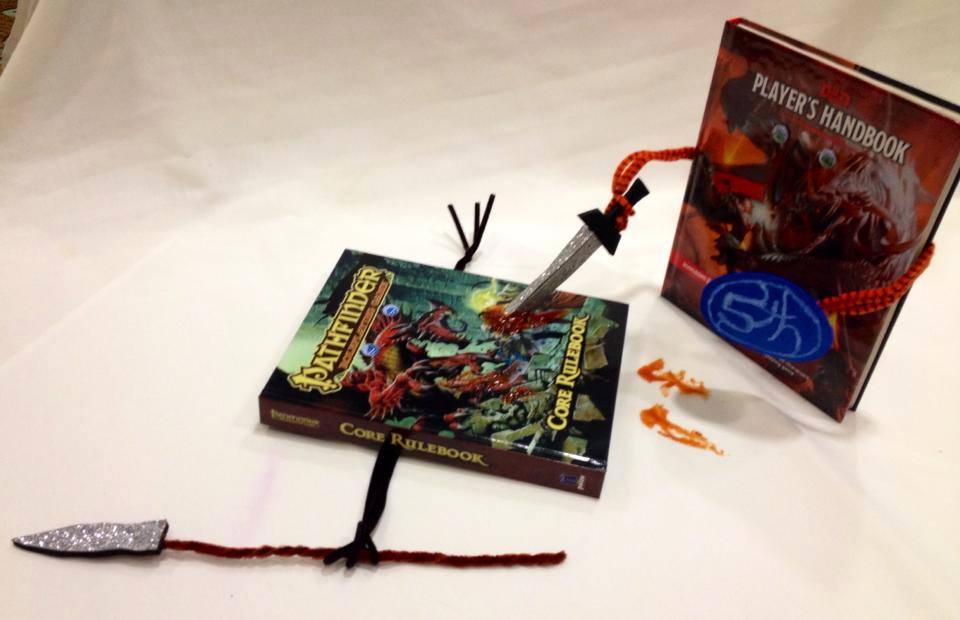Domain Rulership, Part Two

Last time in the History of Domain Rulership, I studied Frank Mentzer’s Companion rules and bemoaned my lack of the Expert rules. To my great surprise, a friend sent me a copy of Expert a few hours after my article went up, so now I can talk about it, and Rules Cyclopedia, and… you know what, I don’t know how much I’ll be able to cover this week, so let’s just take it as it comes.
(Pictured above: every domain ruler needs a council of advisors. This Grima Wormtongue guy seems trustworthy! Wormtongue is a common family name where he’s from. Probably.)
Part One | Part Two
Expert
The first and definitely most important thing I see about settlements and domains is that halflings prefer to live in places that are pleasing to live in. Look, we all think that rolling hills and gentle streams are a pretty nice place to live… but such places are limited and all too readily despoiled, so what do halflings do when (like everyone else) they can’t live in their most ideal locations? But I digress.
Expert has prices for siege equipment like catapults (rules for land-based use are in Companion; rules for naval use are in this book; organization is a funny joke), land and water transport, and all sorts of fortifications and castle-building miscellany. If you want to play OD&D as a tabletop version of The Sims, I won’t judge you, and Mentzer is here to help. The price guide for construction lists values like “75,0” for the barbican – not a notation style I’ve ever seen before, but I assume that means 75,000 gold. I’d feel more confident of that if a quite substantial moat weren’t listed as “4”. There are also some rules to simplify internal pricing, since Mentzer seems to have realized that some players enjoy detailing every floor, ceiling, and window dressing in the whole complex, and some are happier tacking on 25% and calling it a day. A nod to multiple play preferences is a rare thing in gaming era!
Now we start getting into conflicts between Expert and Companion, because like anyone else who might have worked on a project like this, some of Mentzer’s ideas changed as he shifted from indirectly referencing an idea to doing a whole chapter on it. Specifically, settlers in the area around a stronghold pay 10 gp per person each year; settlers in a dominion pay a variety of taxes per family, creating Standard Income and Tax Income. In a way, the most interesting thing about this is that Mentzer knows he’s going to write about one set of topics in Companion, so he points to that future text as a reference, but doesn’t seem to know that he’s going to do a much deeper dive on dominion rules – in fact, he hasn’t yet formalized the term dominion. In Expert, in a section intended only for DMs, the population growth of an area is left entirely to the DM’s discretion.
In contrast to the a la carte design of your happy little citadel with its happy little trees, construction time is fairly simple – 500 gp of progress per day, with no particular discussion of hiring a labor force – and the number of overseers depends on the final cash price of the project, taken as a guideline to its overall size. I really like that there are rules for building in heavily settled areas, which I take to be shorthand for scavenging other buildings for stone and lumber, ease of hiring a labor force, and a much shorter distance to transport those supplies. It’s a lot simpler than comparable systems in later editions, that’s for sure!
Next up are rules for attracting followers once you’ve built the stronghold. These surprised me a bit – there’s not yet any concept of the Theocracy, to which clerics are beholden, but clerics get wildly more followers than other classes do – sixfold more than fighters, fifteenfold more than thieves. They mostly attract normal men and fighters for whatever reason, with only a tiny number of clerics. There are a lot of unexamined assumptions packed into these few paragraphs. Also, demi-human clans behave like people, specifically including petty squabbles and mending rifts in the community with big parties, while human followers behave like they’ve been brainwashed. Almost every word of this page is going out the window in Companion, as Mentzer has the people of a dominion behave like people, with fluctuating confidence in their leaders, and members of different classes can each lead a dominion equally.
When hiring mercenaries, just keep in mind that elves value their lives much more highly than any other race. At these extortionate rates, the elf mercs had better be Haldir and his company at Helm’s Deep. Human heavy cavalry is cheap compared to elf horse archers. Also, try to picture mule-mounted dwarf crossbowmen, and realize that Mentzer basically forgot how one cocks a powerful crossbow.
The last big piece of domain rulership rules in Expert is a second section on how character class interacts with building a stronghold. Particularly for clerics, it almost completely revises the first section on this topic, noting that the cleric’s church may pay for up to half of the stronghold’s cost, depending on the DM’s judgment of how well the player has played the character, which really means how well they’ve stayed on good terms with the church hierarchy. We also see the first hints of Companion’s nobility progression, with a mostly-similar description of how to become a Baron or Baroness. Magic-users certainly have it easy, while thieves might have the hardest lives, thanks to the oversight and treachery of the Guild.
Here endeth the stronghold and dominion management rules of Expert. Compared to Companion, it is a laser focus on a single stronghold rather than a domain of multiple strongholds. It’s a stepping-stone, intended to last for several levels of play but not the rest of a campaign. There’s a wonderfully clear – if not formalized – tiering of gameplay, and in Mentzer’s OD&D there are five such tiers. Translating forward to 5e, you could reasonably put PCs in charge of a stronghold anytime between 5th and 11th. They take charge of a full dominion at the beginning of the next tier (11th or 17th), having conquered it over the previous six levels. Maybe you even go for Immortals-level play, using the 5e DMG’s post-20th-level alternate advancement.
Or you could play Birthright, and start domain-level play at 1st level. Just sayin’.
No, I am never going to stop pimping Birthright, why do you ask?
Rules Cyclopedia
The RC is a reorganization of BECMI text. It’s a lot easier to find what you’re looking for this time around. It’s also a lot clearer that there are ways to opt out of stronghold and dominion management (this may have been true in BECMI already; I still haven’t read Basic, Master, or Immortal). Each class has a dominion-play option and a wandering option, and I think that’s really cool, but I do hope players and DMs communicate clearly about which kind of game everyone at the table wants.
The other substantial changes: stronghold-construction prices got rebalanced in a big way (e.g., barbicans dropped by 38k gp) and the siege-relevant stats got integrated into the same chart as the prices. There’s a lot more detail on NPCs you need to hire (or roles for PCs to fill, I guess?) in your stronghold, and that’s pretty cool. The monthly wages of the twenty different types of advisors could bankrupt ancient and mighty red dragons, so I hope you have a broad tax base or some truly staggering hoards from your adventuring career! You can do without some of these advisors, especially if there are other PCs in the party that you can get away with not paying, but… yeah.
I should mention that neither the Expert/Companion rules nor the RC account for the fact that it’s a fantasy setting in which people might use magic to solve problems (or at least the problems of having magic in the world) as part of stronghold design or dominion management. At least the latter work includes magic-users and clerics among the must-have advisors.
Advanced Dungeons & Dragons
We’ve moved “forward” in edition numbering, going from an OD&D version to 1e, but backward in time to 1979. Heretic that I am, I have never done a beginning-to-end read-through of the fabled, but mind-bogglingly disorganized, 1e DMG. There’s more detail than I could really imagine needing on hirelings and expert hirelings, including two full pages on the capabilities and quirks of sages. Look, no one loves obsessively-detailed fantasy academia more than I do. No one. But this goes so far beyond what I can envision as practical usage at the table that I just stare in awe. I would love to know what was going on at Gygax’s table, that he needed and used these details.
The rules on domain management are, curiously, almost entirely about how to turn wilderness into settled land. Gygax waxes loquacious on this point, far more than Mentzer will. He has nothing to say on the day-to-day or month-to-month life of a domain ruler, except to emphasize that the stronghold should be a focus of stories and conflicts. Even more than Mentzer does, Gygax cuts thieves, monks, and magic-users off at the knees when it comes to domain rulership, insisting that magic-users have “too many demands on their time.”
God help the peasantry, serfs, and chattel slaves, for Gygax has no patience for them. Their petty uprisings of 0th to 1st-level characters must be suppressed as soon as possible, or they will grow and, eventually, become full-on revolutionaries with character levels. The way he writes it, I’m not cheering for the PCs here, that’s for damn sure.
The last piece of stronghold- or domain-management rules of this book is an exhaustively detailed rundown on prices of stronghold construction – every murder hole, catwalk, and door seems to have a price and a two to three sentence description. It is, at least, interesting that Mentzer’s gold costs are an order of magnitude greater than Gygax’s in some cases – I think I had it in my head that pricing would be more similar between OD&D and 1e. I don’t know why I thought that! There are also rules on sieges, including siege engines, that come together into a whole that I really don’t understand at all. I’m pretty sure that’s not the rum & Coke speaking, or at least not just that.
My strong impression is that Gygax has all kinds of good intentions when it comes to stronghold and domain gameplay, but he’s so excited about explaining all of the ways this can make the PCs’ lives difficult that he forgets to describe any sort of systemic approach. Taxes are presented as things PCs pay rather than collect. Gygax’s wilderness is a demon-haunted (well, orc-haunted) wood; Mentzer’s wilds have terrors aplenty, but once those terrors are gone, humans and demi-humans can reap that extraordinary bounty. Mentzer’s work is about the march of progress and hope; Gygax’s land is just waiting to return to the darkness.
Given the areas that Gygax glosses over, there might be a lot more detail in other 1e books that I don’t know about. I pretend to no authority here – if you know of Dragon Magazine articles or sourcebooks intended for 1e that touch on domain rulership, I’m all ears.
Next time in Domain Rulership, we’ll move on to AD&D 2e and The Castle Guide, where Mentzer’s rules get a much more in-depth treatment, with extensive socio-economic factors.



